Unwavering talent
Every football era, from the muddy fields of the 1930s to the state-of-the-art stadiums of today, has produced new tactics, fashions, and legendary players. As a result, dominance, influence, and enduring legacy are more important factors in choosing the best player of each decade than statistics. Let’s travel through football history and examine the key figures of each period.
Football’s popularity quickly expanded throughout Europe and South America in the 1930s, thanks in large part to the first significant international competitions, such as the first FIFA World Cup in 1930 (pictured). With players like José Nasazzi, Dixie Dean, and Alex James, the “Wunderteam” from Uruguay, Italy, and Austria dominated the sport. During this period, Vittorio Pozzo’s Metodo system replaced the conventional 2–3–5 tactic.

Without a doubt, Giuseppe Meazza was the most notable player of the time. He became a national hero because of his inventiveness, style, and goal-scoring prowess; Italy even named their most renowned stadium, the San Siro, after him. With 282 goals for Inter Milan and 33 goals in 53 games for Italy, he was the most popular player in Serie A and helped the country win two World Cups (1934 and 1938).

Due to the suspension of numerous leagues and players serving in the armed forces, World War II severely disrupted the 1940s. Football made a triumphant comeback after the war, particularly in South America and Britain. José Manuel Moreno and Stanley Matthews (left) were notable stars. With renewed vigor, international competitions also resumed.
Valentino Mazzola, the best player of the 1940s
Valentino Mazzola was the player who truly stood out during this turbulent time. He scored 118 goals in 195 games while captaining Torino’s Grande Torino team, which won five straight Serie A titles (1943–49). He is regarded as one of the greatest number 10s in football history. Mazzola’s legendary career was tragically cut short in 1949 when he died at the age of 30 in the Superga air disaster, but his impact from that decade is still unrivaled.
A heyday for international football was the 1950s.
The FIFA World Cup gained international recognition in the 1950s thanks to its renowned competitions in 1950 and 1954. The decade was lighted by Uruguay’s “Maracanazo,” Hungary’s “Mighty Magyars,” and Brazil’s up-and-coming flair squads. Club football also flourished with the creation of the European Cup in 1955, and players like Lev Yashin and Gunnar Nordahl (pictured) gained international recognition.
Alfredo Di Stéfano was the best player of the 1950s.
Real Madrid rose to prominence thanks to the European Cup, and their star player, Alfredo Di Stéfano, led Los Blancos to five straight European Cup victories between 1956 and 1960. He was a complete forward who could, as it turned out, play anywhere on the field and scored 216 goals in 282 games for the team alongside the equally deadly Puskás. He was born in Buenos Aires and played for Argentina and Colombia, as was possible in those days, before deciding to play for Spain, where he scored 23 goals in 31 games.
Second place went to Ferenc Puskás.
The other legendary forward of the 1950s was Puskás, who played for Budapest Honvéd and then Real Madrid. He guided Hungary’s “Mighty Magyars” to a World Cup final in 1954 and an Olympic gold medal in 1952. He and Di Stéfano had a deadly partnership at Madrid, where they won multiple league titles and three European Cups.
Global superstardom in the 1960s
In the 1960s, exciting World Cups and television broadcasting helped football reach a wider audience. On the field, the game was getting more physical, faster, and more professional. Alongside legendary club teams like Santos and Benfica, who had Pelé and Eusébio in their ranks, respectively, Brazil’s 1962 champions and England’s 1966 winners stood out during this time. Other well-known athletes to emerge were George Best, Garrincha, and Bobby Charlton (pictured).
Pelé was the best player of the 1960s.
Pelé holds a Guinness World Record with 1,279 goals in 1,363 games, including unofficial ones. He is arguably the greatest player of the 1960s just for that reason. But he also led Santos to several Copa Libertadores championships and won three FIFA World Cups (1958, 1962, and 1970). He was the first genuinely worldwide football superstar because of his strength, speed, and vision.
Eusébio came in second.
Eusébio established himself at Benfica, where he won the 1962 European Cup and eleven Portuguese league championships. He led Portugal to a historic third-place finish at the 1966 World Cup, where he was the team’s top scorer. His clinical finishing and explosive speed blazed through the 1960s, and he was born in Mozambique. Eusébio turned into a representation of Portugal’s and Africa’s talent and pride.
Johan Cruyff was the best player of the 1970s.
But Johan Cruyff was the tallest of all. With his contribution to the Total Football philosophy, which manager Rinus Michels pioneered, he transformed football and guided Ajax to three consecutive European Cups (1971–73). He led the Netherlands to the 1974 World Cup final and was the recipient of three Ballon d’Or honors (1971, 1973, and 1974). Football was revolutionized by Cruyff’s brilliance, agility, and technical skill, and his impact can still be seen in contemporary coaching theories.
Franz Beckenbauer came in second place.
Beckenbauer was a pioneer of the libero role, combining intelligence and defensive strength. He was a graceful leader for West Germany, leading them to World Cup glory in 1974, and for Bayern Munich, where he won three European Cups. Known as “Der Kaiser,” he was the recipient of two Ballon d’Or awards in the 1970s. He had a huge impact on football strategy, particularly after he became a coach.
The 1980s: Strength, skill, and enthusiasm
In addition to a more physical football style, the 1980s saw incredible individual talent and technical skill. Argentina’s flair, Italy’s defensive prowess, and France’s creative midfielders all left their mark. As the world’s attention was captured by superstars like Karl-Heinz Rummenigge, Michel Platini, and Kenny Dalglish (pictured center), clubs like Liverpool, Juventus, and AC Milan gained prominence.
Diego Maradona was the best player of the 1980s.
Diego Maradona, however, was the man who best embodied football in the 1980s. Argentina won the 1986 FIFA World Cup thanks to his performances, which included scoring the renowned “Hand of God” and “Goal of the Century” against England. In 1987 and 1990, he also helped Napoli win Serie A titles, which drastically changed the team’s fortunes. Because of his unrivaled dribbling balance, inventiveness, and eccentricity, Maradona became a decade-defining figure.
Second place went to Michel Platini.
Michel Platini was Maradona’s principal opponent for the title in the 1980s. The Frenchman won several domestic championships, the European Cup, and the Cup Winners’ Cup while he was at Juventus. He also won three straight Ballon d’Ors from 1983 to 1985. The attacking midfielder finished as the top scorer and best player at Euro ’84, helping France win their first major trophy.

Ronaldo was the best player of the 1990s.
Ronaldo Nazário was the star of the decade, scoring an amazing 310 goals in 481 club games, despite suffering several knee injuries that threatened his career (Transfermarkt). Before the age of 22, he had already won two FIFA World Player of the Year titles (1996 and 1997) and had guided Brazil to the 1998 World Cup final. His quickness, dribbling, and clinical finishing redefined the role of the striker and established a standard for all subsequent players. What might he have accomplished if he had stayed?
Zinedine Zidane came in second.
Zidane’s balance, control, and ability to decide matches on the biggest stages made him a generational talent, despite the fact that it is extremely unfortunate that he spans two decades. He won two Serie A championships and a Champions League title in 2002 while playing for Juventus and Real Madrid. He played a key role in France’s victories at the 1998 World Cup and Euro 2000, scoring twice in the ’98 final. In 1998, he was also awarded the Ballon d’Or.
Ronaldinho was the best player of the 2000s.
On the other hand, Ronaldinho was just simply superior. According to Transfermarkt, the Brazilian wizard led Barcelona to two La Liga championships and a UEFA Champions League victory in 2006, and he was named FIFA World Player of the Year twice (in 2004 and 2005). In just the 2005–06 season, he recorded 26 assists. In actuality, his influence contributed to the establishment of Barcelona’s future supremacy. He won the prestigious Ballon d’Or in 2005 and became a global favorite thanks to his technical prowess, inventiveness, and upbeat playing style.
Thierry Henry came in second.
Thierry Henry, the face of Arsenal’s undefeated ‘Invincibles’ season in 2003–04 and their all-time leading scorer, is just surpassed by Ronaldinho. Along with winning the World Cup and Euro 2000 in 1998, he was a standout player for France. In 2009, he won the Champions League with Barcelona. In the 2000s, Henry, who was renowned for his quickness, wit, and clinical finishing, revolutionized the forward position. Few people are as good at combining style and efficiency as he is.
The Ronaldo and Messi era of the 2010s
Two men dominated the 2010s: Lionel Messi (center) and Cristiano Ronaldo (left), who between 2008 and 2019 won an incredible 11 Ballon d’Or awards. High pressing and ball retention became the norm in club football, which led to Real Madrid and FC Barcelona dominating Europe. Neymar (right), Luka Modrić, Luis Suárez, and Robert Lewandowski were among the other shining stars, but two men stood out.
Lionel Messi was the 2010s’ best player.
Lionel Messi, who scored 672 goals and disheveled 303 assists in 778 games during his prime at FC Barcelona, wins a close race against his former rival (Transfermarkt). He won five Ballon d’Or awards between 2010 and 2019 and led the Blaugrana to two UEFA Champions League titles and seven La Liga championships. In 2022, he won the FIFA World Cup with Argentina, making him possibly the greatest of all time.
Cristiano Ronaldo came in second.
Cristiano Ronaldo pushed him all the way, but Messi was the one who made the 2010s memorable. Ronaldo became Real Madrid’s all-time top scorer during this decade, won four Champions League titles with the team, and guided Portugal to their first major international trophy at Euro 2016. In the 2010s alone, he broke European goal records and won four Ballon d’Ors. Ronaldo’s legacy as one of the greatest football players of all time is undeniable; he is merciless, unrelenting, and incredibly consistent.
2020s: A new generation assumes leadership
Although the 2020s are still in progress, a number of new celebrities have already achieved international renown during this decade. With the help of Middle Eastern oil money, Manchester City and Paris Saint-Germain are attempting to make a name for themselves among Europe’s elite, while France and England are both enjoying so-called Golden Generations. The new wave is being led by players like Vinícius Júnior, Erling Haaland, and Mohamed Salah (pictured).
Kylian Mbappé is the best player of the 2020s thus far.
But without a doubt, Kylian Mbappé has been the biggest star of the first five and a half years of the 2020s. He had already won five Ligue 1 titles with PSG and scored more than 250 senior goals by the time he was 25. He was the most impressive player at the 2018 FIFA World Cup, and with a spectacular hat-trick in the 2022 final, he almost gave France a victory. Since joining Real Madrid, Mbappé has emerged as the early favorite to win player of the decade due to his speed, finishing, and poise under duress.
Potential candidates
There is obviously plenty of time for things to change, as the decade still has four and a half years left. Erling Haaland (pictured), who led Manchester City to a historic treble in 2022–2023 with 52 goals in his debut season (per Transfermarkt), is undoubtedly a contender. Jude Bellingham has also demonstrated leadership and technical prowess while playing for Real Madrid and England before the age of 22. By the end of the 2020s, both players could rule the world of football.


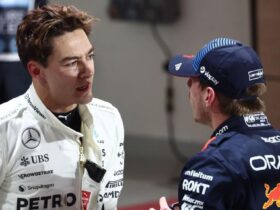

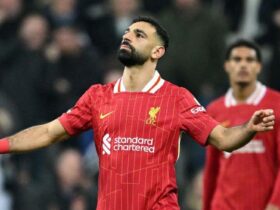


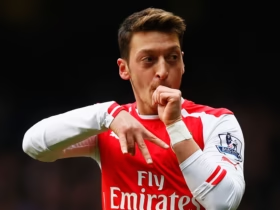




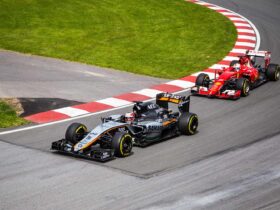
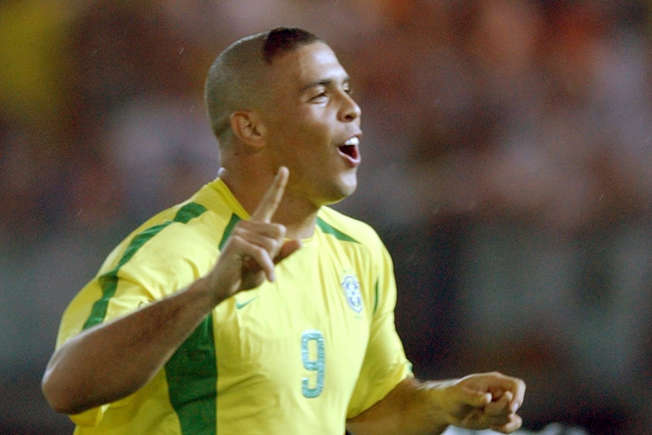



























Leave a Reply